 Creepy
Creepy  Creepy
Creepy  Technology
Technology 10 Scientific Breakthroughs of 2025 That’ll Change Everything
 Our World
Our World 10 Ways Icelandic Culture Makes Other Countries Look Boring
 Misconceptions
Misconceptions 10 Common Misconceptions About the Victorian Era
 Mysteries
Mysteries 10 Strange Unexplained Mysteries of 2025
 Miscellaneous
Miscellaneous 10 of History’s Most Bell-Ringing Finishing Moves
 History
History 10 Great Escapes That Ended Right Back in Captivity
 Weird Stuff
Weird Stuff 10 Fascinating Things You Might Not Know About Spiders
 Food
Food 10 Everyday Foods You Didn’t Know Were Invented by the U.S. Military
 History
History 10 Odd Things Colonial Americans Kept at Home
 Creepy
Creepy 10 More Representations of Death from Myth, Legend, and Folktale
 Technology
Technology 10 Scientific Breakthroughs of 2025 That’ll Change Everything
 Our World
Our World 10 Ways Icelandic Culture Makes Other Countries Look Boring
Who's Behind Listverse?

Jamie Frater
Head Editor
Jamie founded Listverse due to an insatiable desire to share fascinating, obscure, and bizarre facts. He has been a guest speaker on numerous national radio and television stations and is a five time published author.
More About Us Misconceptions
Misconceptions 10 Common Misconceptions About the Victorian Era
 Mysteries
Mysteries 10 Strange Unexplained Mysteries of 2025
 Miscellaneous
Miscellaneous 10 of History’s Most Bell-Ringing Finishing Moves
 History
History 10 Great Escapes That Ended Right Back in Captivity
 Weird Stuff
Weird Stuff 10 Fascinating Things You Might Not Know About Spiders
 Food
Food 10 Everyday Foods You Didn’t Know Were Invented by the U.S. Military
 History
History 10 Odd Things Colonial Americans Kept at Home
10 Ways Our Ancestors Killed Themselves In The Name Of Fashion
Humans, especially women, have always craved the latest fashion fads and items like clothes, cosmetics, shoes, hairstyles, bags, dressing styles, and so on. While we do have issues with many fashion items today, including lead-laced lipstick, high heels that damage bones and leg muscles, and whitening creams that cause cancer, we’d be shocked to find out that today’s fashion dangers are actually mild when compared to that of our grandparents—who took it to highly deadly levels.
10Blood Draining And Ceruse

Having a pale, white skin was the “in” thing during the Elizabethan era. Pale skin was believed to be a symbol of wealth, as only a rich woman who did not need to work in the sun could have it. This forced the women of the day to do everything possible to get a pale look. Some rubbed their skin with ceruse—a dangerous and deadly mixture of lead and vinegar. People of the day warned them about using ceruse on their skin and advised them to use less deadly items like egg whites, alum, and tin ash. Others used chalk, and some even experimented with human and animal urine.
The mixtures the women rubbed on their faces often created a screen and made them so white that they had to draw their veins on their skin. They were always careful not to laugh lest the screen cracked. Some women, while not using dangerous chemicals, took it to greater extents by using leeches to drain their blood and get a pale skin.
9The Caged Crinoline
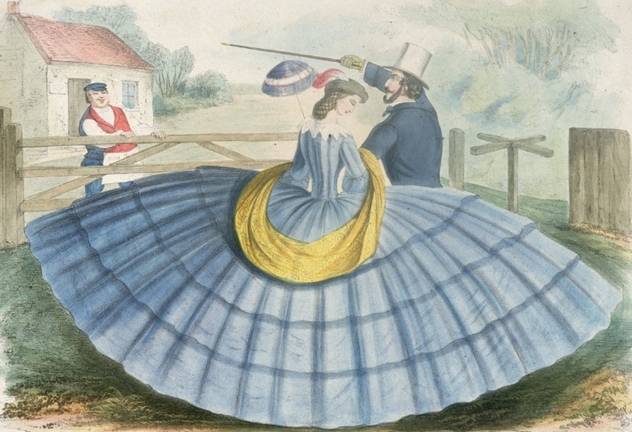
The caged crinoline (or hoop skirt) was a skirt with wide internal frames made of whalebone, cane, steel, or iron that our grandmothers wore to have an hourglass shape. In some instances, inflated rubber tires were used in place of the cages. Crinolines were the craze during their days, and people even coined the word “crinolinemania” to refer to the crinoline “madness.” Women who wore the crinoline, which could be nearly 2 meters (6 ft) wide at its base, often had problems passing through doors of houses and horse-drawn carriages. Some cartoons even showed women putting the crinolines on their carriages.
Besides the inconvenience, the crinoline was also a real fire hazard. Its abnormally wide base meant it could touch fire without the wearer knowing. The highly flammable silk and cotton materials used for the skirts and the wide base between the legs of the wearer also meant the flame could burn easily. In fact, the New York Times reported that—within two months—19 women were killed after their crinolines caught fire. Aside from being caught in a fire, women wearing crinolines were sometimes blown around by heavy winds. They also got caught in factory machines, between chairs at restaurants, and by carriage wheels.
8Poisonous Shoe Polish
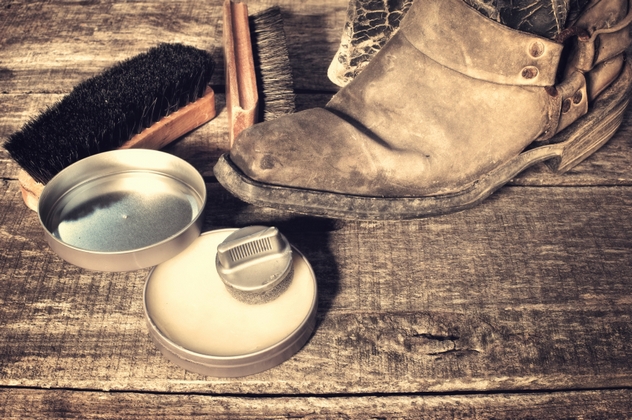
Nitrobenzene is a toxic chemical used in holding the contents of shoe polishes together. Unfortunately, nitrobenzene can enter the human body through the skin of whoever wears a shoe polished with it. Interestingly, our grandparents knew the dangers associated with the chemical, yet they continued using it. In fact, when polish makers made a nonpoisonous solvent to replace the chemical, our grandparents rejected the new polish because it was odorless, which made them believe it was a knockoff and not the real thing.
Nitrobenzene did not have a definite effect on victims, and it often led to different things in different people. Some people merely ended up with involuntary shaking of their body, while others went into coma or even died. One college student required two blood transfusions after coming in contact with it.
The worst hit were people who consumed alcohol after coming in contact with nitrobenzene. A factory worker who handled it at his place of work once fainted after drinking alcohol. Another salesperson, who had used a nitrobenzene-based shoe polish, died four and a half hours after drinking alcohol, which reacted with the toxic chemical in his body.
7X-Ray Hair Removal
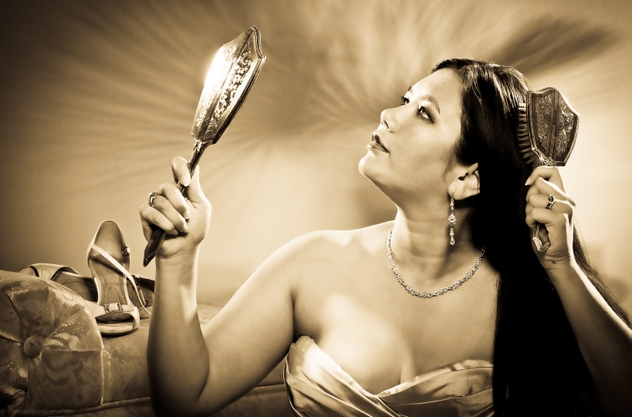
Before the invention of the X-ray, our grandmas used electrolysis, which was a slow, ineffective, painful, costly, and—most importantly—safe method of removing hair from their faces. The X-ray was the exact opposite: It was fast, effective, painless, cheap, and deadly. Several practitioners condemned it and declared that it caused unfavorable side effects including thick skin, scales, wrinkles, cuts, and cancer, many of which would only appear about 21 years after exposure. Other practitioners denounced these claims, insisting they were caused by improper use.
Albert Geyser, who had been against the use of X-rays for hair removals, soon came up with the Cornell X-ray that he claimed was safe to use and did not have all the undesirable side effects of the other X-ray machines. He started a company and began producing his patented X-ray that he handed over to “trained” nonmedical operators to use in their beauty parlors. Some years later, women began suing Geyser (who soon ran out of business) as the undesirable side effects of his X-rays, including wrinkled and thick skin, began surfacing. Several other companies producing X-ray machines for removing facial hair were also sued, but they simply moved to a new location, changed their names, and continued with their business.
The X-rays turned deadly for our grandmothers in the 1940s (about 20 years after initial exposure), when many of them began succumbing to cancer and, subsequently, death. Two Canadian doctors even coined the name “North American Hiroshima Maiden syndrome” to refer to the women suffering from long-term effects of the X-rays.
6Chopines

The chopine was a bizarre type of shoe our grandmothers wore in 16th-century Venice, Italy. The shoe, which they wore to show off their wealth and nobility, originated from the Near East and was most likely inspired by the clogs Turkish women wore in bathhouses or the shoes Greek actors wore on stages.
The shoe was also worn in China in the 1600s as a replacement for foot binding. It had a wooden or cork sole about 15 centimeters (6 in) or—in extreme cases—75 centimeters (30 in) high. The shoe made the women so tall and abnormal-looking that people referred to them as “half human and half wood.” Many of them had such problems walking that they often required a maid or cane for balance.
Surprisingly, the church approved the wearing of chopines because of the belief that the difficulty in movement it created would discourage women from dancing, which the church considered a sin. The chopines were later banned and declared illegal in Venice when women began suffering miscarriages after falling from them.
5Arsenic Dresses
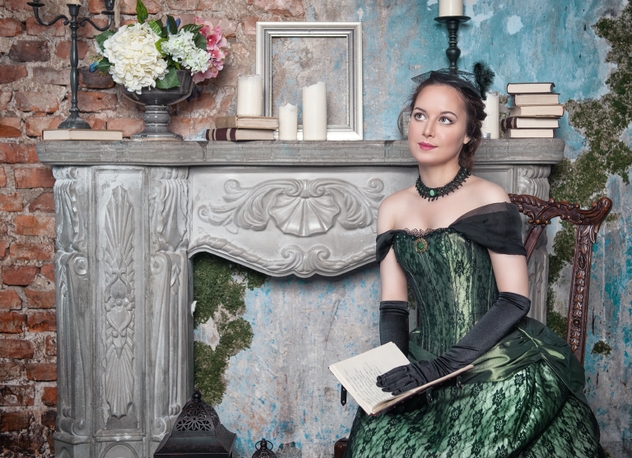
Back in the Victorian era, Carl Wilhelm Scheele invented a green dye called “Scheele’s green,” which became an instant hit. Before his innovation, there was no green dye people could use for their clothes, wallpapers, and paintings. The only way they could get the green color was to dye the item blue, then yellow, or vice versa. However, Scheele’s green—a mixture of copper and arsenic—was poisonous, dangerous, and deadly, as the arsenic could penetrate the skin of the person wearing the dyed clothing. The dye also left the wearer with nasal, gastric, and eye irritation. Arsenic socks also led to irritation, poisoning, and death in children. Rooms painted with arsenic paints were suspected of killing children who breathed in the dangerous chemicals leaving the walls. (It has even been implicated in the death of Napoleon.)
But our grandmothers did not only use Scheele’s green for their dresses; they also used it to paint their houses and dye their shoes. Even when people found out how dangerous and deadly Scheele’s green was, they did not stop using it. In fact, they came up with a newer, brighter, more colorful, and deadlier green called “emerald green,” which was made from a mixture of an equally deadly copper acetoarsenite. Emerald green was so deadly that it remained in vogue for less than a century, at which point our grandparents decided to preserve their lives. However, the arsenic clothes did not die off easily. While people stopped wearing the clothes, they began using them to cover their walls, tables, and food.
4Mismanaging Tuberculosis And Emulating Tuberculosis Victims

Tuberculosis caused epidemics back in the 19th and 20th centuries, when people had very poor knowledge about sanitation. In fact, by 1915, one in four people in England died of tuberculosis. In 1918, one in six people in France died of it. Its symptoms were a high fever followed by excessive weight loss, bloody coughs, and—finally—death.
Interestingly, our grandparents believed dying of tuberculosis—then called “consumption” because of the way it “consumed” infected people—was fashionable and cool. Women admired tuberculosis victims because of their thin stature, pale skin, bright eyes, and red cheeks, which were features of the fashion icons of the day. They also considered death by tuberculosis interesting, affectionate, and romantic, since the infected person died slowly. Even Lord Byron—the famous poet—got in on the fad, saying he would like to die of consumption because women would admire him.
To join the fashion train, people with tuberculosis began mismanaging their health while healthy people did everything possible, including eating poisonous arsenic to get the fashionable pale skin of tuberculosis victims. In other words, in order to look fashionable, our sick grandparents refused to take their health seriously (which led to their death), while our healthy grandmothers did all they could to look unhealthy (which also led to their death).
3Tooth Decay
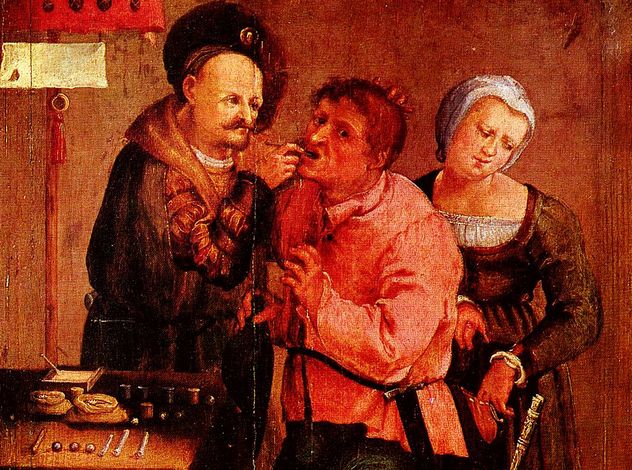
Tooth decay was pretty common during the days of our grandparents, who believed it was caused by worms in the teeth. It was not until 1890 that Willoughby D. Miller discovered that bacteria were actually responsible for tooth decay. Extracting a decayed tooth was a very gruesome and painful experience.
The introduction of sugar into Europe increased cases of tooth decay, as more people—mostly the rich who could afford sugar—began suffering from it. Queen Elizabeth I suffered from tooth decay and black teeth, so that most of them were removed. She had to put rags into her mouth to prevent her cheeks from caving into it.
Interestingly, rather than finding a lasting solution to their decayed and black teeth, our grandparents hurriedly turned it into a fashion fad, since it was evidence that they were rich enough to afford sugar. In fact, those who did not have decayed teeth began painting them black to mimic people with black teeth.
2Fontange
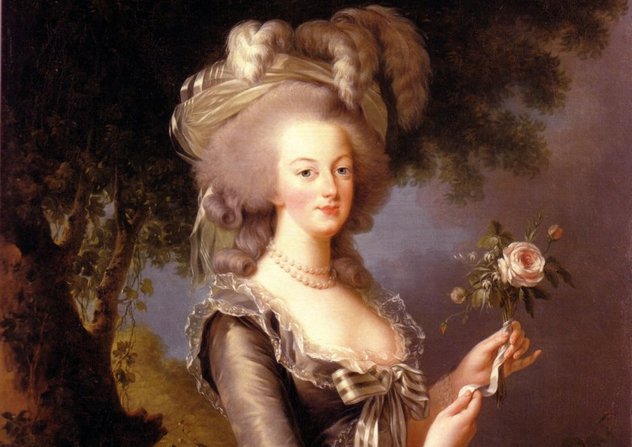
The fontange hairstyle made its first appearance in the 1680s. One of the mistresses of King Louis XIV of France hurriedly put it together after her initial hairstyle was destroyed during a hunt. King Louis XIV liked the hair, and before we could say “fontange,” women began inventing new ways to kill themselves.
The hairstyle made by Louis’s mistress was short, but the women of the day made theirs taller. Their fontanges got so tall that making them stay upright became a daunting task, as they would often bend to one side or the other. Women began adding egg whites to their hair for several weeks to make it as stiff as possible. This left their hair smelling so bad that they often used loads of perfume to hide the disgusting smell. Others added flour and starch, which meant lice, insects, and mice would often make a meal out of their hair. The hairstyle took a lot of time and effort, and women would often leave it on their heads for weeks. This meant their hair often got hot, itchy, and smelly.
This did not deter French women, and the fontanges only got taller. Some could be as high 120 centimeters (47 in), so that a servant using a stick to hold the hair in place often walked behind the women. They also could not lie down to sleep and had to sleep while sitting upright. Aside from the animals that fed on the hair, the abnormal height of the hair also meant it often caught fire from candles attached to chandeliers hanging from the ceiling.
1Celluloid Hair Combs
Celluloid hair combs were used by lower-class women from the 1870s to 1920s to imitate crowns worn by women of the upper class. The combs were sold as “improved tortoise shell” to implicate the more expensive crowns, although they were made of nothing other than an early form of plastic called celluloid. The celluloid hair combs were lighter, cheaper, and deadlier than the crowns they were made to imitate.
The problem was that the cellulose plastic often melted into its wearer’s hair whenever it was exposed to sunlight, and it could ignite and explode if it was close to a fire. Stories about these combs killing women were common. Three women in three different towns ended up with badly burned scalps after their combs exploded on the same day. Another lady from Santa Barbara was burned after her comb exploded. However, these accidents were still mild when compared to one comb that ignited and caused a fire so serious that the fire department had to be called in.








